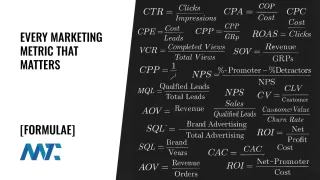Inbound marketing is rooted in attracting, engaging, and delighting customers through the delivery of valuable content and experiences. As marketing tools become more sophisticated, so too must our ability to measure the effectiveness of our efforts.
For inbound marketers, the ability to assess performance accurately is not just a technical necessity—it’s a strategic imperative. The goal is to build a data-driven approach that evolves from basic tracking to advanced decision-making insights. To achieve this, marketers must progress through a structured four-level framework for marketing data.
The Inbound Marketing Analytics Framework
This framework defines a step-by-step process to guide marketers from foundational data to actionable intelligence. Each level builds upon the last, gradually layering in complexity and depth. The process recommended includes:
- Begin by establishing baseline metrics to track visits, conversions, and basic engagement.
- Layer in source-based insights to understand traffic origin and behavior by channel.
- Analyze attribution and granular user behavior to determine what’s driving success.
- Incorporate business outcomes and brand-level metrics for executive-level visibility.
By working through Levels 1 through 4, marketers can ensure they capture data that not only reflects activity but also drives strategic decisions aligned with business goals.
Level 1: Baseline Performance Metrics
Level 1 metrics are the foundation of any inbound marketing program. These KPIs focus on understanding basic website and lead generation performance.
- Visits (Traffic): Tracks the number of users visiting your website. This is a basic measure of visibility and reach.
- Leads: The number of visitors who take an action that indicates interest, such as filling out a form or downloading a resource.
- Customers from Inbound Marketing: Attribution of closed deals that can be traced to inbound efforts like organic search or content marketing.
- Visitors-to-Leads Conversion Rate: Measures how effective your website is at turning traffic into leads. A low rate suggests either unqualified traffic or a poor user experience.
- Delays or Spikes in Metrics: Identifying anomalies in this data helps you understand how campaigns, outages, or trends may be influencing traffic and lead flow.
- Links to Business Outcomes: Even at this level, it’s essential to start aligning marketing actions with sales outcomes, even if only directionally.
Level 2: Channel and Campaign Insight Metrics
Once the basics are in place, the next level of analytics involves dissecting traffic by source and identifying what channels are contributing to growth.
- Traffic Sources: Tracks the origin of visitors—organic search, paid search, referral traffic, social media, email campaigns. This helps marketers invest resources where they’re most effective.
- Visits by Traffic Source: Goes beyond just counting sources to examine the quality of traffic from each channel.
- Leads & Customers by Source: This shows which channels not only attract visitors but also convert them into leads and customers.
- Delays & Benchmarks: Compare your source-specific performance over time or against industry benchmarks to assess effectiveness.
Reviewing Level 2 metrics several times a week is typical, especially for active campaigns or seasonal strategies.
Level 3: Behavioral and Attribution Metrics
With traffic and source data in hand, marketers can now dive deeper into the behavior behind the clicks and conversions.
- Granular Data by Source: Breaks down individual user actions by traffic source, revealing patterns such as bounce rates, session duration, and content engagement.
- Attribution Modeling: Assigns credit to the different touchpoints (e.g., blog, email, webinar) that contribute to a customer’s journey. This reveals which content actually drives conversions.
- Blog and Content Analytics: Analyzes the role of specific content in nurturing visitors, building authority, and guiding leads through the funnel.
- Benchmarks and Trends: Helps you assess the effectiveness of your behavioral strategies compared to previous performance or industry standards.
These metrics should be reviewed monthly to spot emerging trends and refine attribution assumptions.
Level 4: Strategic and Brand Metrics
At the highest level, marketing data becomes a driver of executive decision-making. These insights require a longer-term, strategic lens.
- Factors That Impact Your Marketing Strategy: External events, seasonal shifts, or market changes that influence inbound performance.
- Social Engagement Metrics: Includes social shares, followers, likes, comments, and network growth. These reveal how your content resonates in distributed channels.
- Inbound Links and SEO Metrics: Monitors backlink growth, keyword rankings, and time on site—signaling how well your content performs in organic environments.
- Advanced User Behavior: Tracks metrics such as time spent on the page, scroll depth, and interactive engagement with rich media.
This strategic data is often reviewed monthly or quarterly and helps justify investments in brand, content, and longer sales cycles.
Aligning Data to Executive Stakeholders
Each level of data corresponds to different roles and responsibilities within a company.
- CEOs focus primarily on Level 1 data, where they can track the direct business impact of their marketing efforts.
- CMOs rely on Level 2 metrics to optimize budgets and identify the highest-performing channels.
- Marketing Managers spend their time with Level 3 data, analyzing behavior and attribution to refine campaigns.
- Marketing Coordinators and Specialists often reside in Level 4, where they monitor social signals, SEO outcomes, and audience engagement.
A progressive approach to inbound marketing metrics ensures that every data point serves a purpose. By starting with basic metrics and expanding to deeper strategic insights, marketing teams can make informed decisions that resonate from the campaign level to the boardroom. More importantly, this framework allows marketers to tie their efforts to business outcomes, making data not just a dashboard activity, but a competitive advantage.
